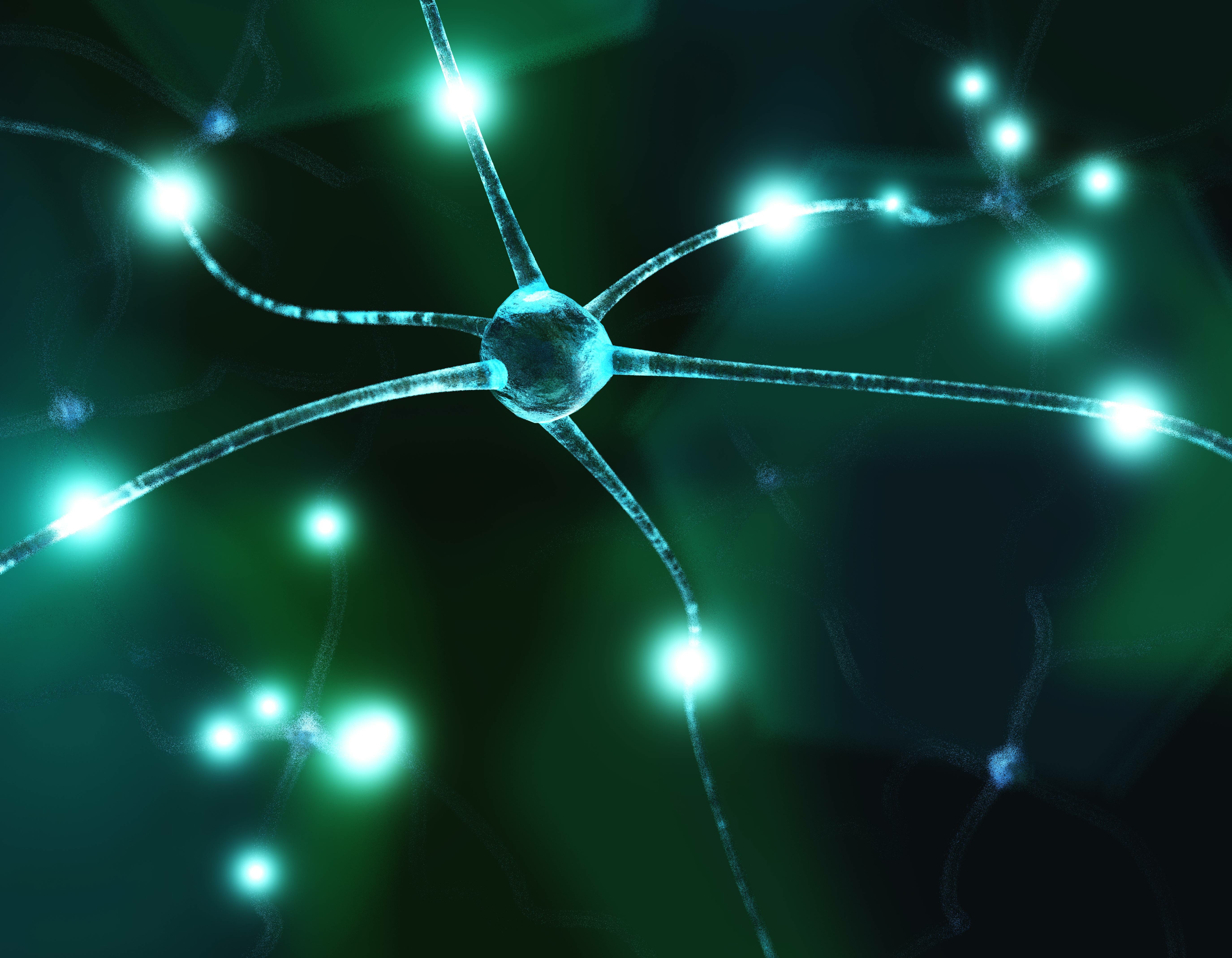Chromatic Bioluminescence as a Cellular Level Readout System of Neural Activity
This technique could be used to visualize neuronal activity in the brain, in nerves, or in ex vivo systems.
Some compounds can emit luminescence in response to changes in intracellular ion concentrations. Neuronal depolarization, and the generation of an action potential, involves an elevation in intracellular calcium, which causes the cell to emit fluorescence. This fluorescence can serve as an indicator of neural activity, potentially the visualization of activity within neurons of a brain, the visualization of activity of nerves in vivo, and more. Brain-machine interfaces (BMIs) which allow for direct communication between the brain and an external device have the potential to restore sensory or motor function to patients with spinal cord injuries or amputations.
Conventional BMI systems lack certain useful features. These include (1) minimal invasiveness, (2) long lifetime (3) provision of high information content (4) robustness, and (5) portability. It would be particularly advantageous if a BMI system could differentiate the activity of specific neurons within an observed field of neurons. One example would be the case where neurons responsive to one input, but not another, are anatomically co-mingled with neurons with the opposite pattern of responsiveness; other examples would be cases where neurons do not respond to either stimulus, or respond to both, or otherwise respond differently to one or more stimuli than do other neurons located nearby. Conventional BMI systems do not have this capability.
A species of jellyfish -- Aequorea victoria -- produces a protein known as aequorin, a calcium-dependent bioluminescent protein that exists as a complex with a fluorescent protein. In the presence of calcium, aequorin catalyzes a luciferase reaction, and the energy gained from that oxidation reaction causes the fluorescent protein to release a green photon. In this way, neural activity has been reported by aequorin in both zebrafish and in the leg nerves of mice. Aequorin-fluorescent protein reactions have good temporal resolution and are bright (low or no background noise), but we need multiple colors to distinguish the activity between multiple, intermingled neurons that results because of a temporal overlap between signals generated from different neurons.
A scientist at SUNY Downstate has developed a method for detecting neuronal activity. Neuronal activity can be induced experimentally by administering coelenterazine to a subject, and the resulting expression of two or more polypeptides of a specific amino acid sequence. These can then be detected via a spectral pattern of electromagnetic radiation emitted by the neurons in response to the stimulation, and recorded. A second neuronal stimulus produces a second spatiotemporal and spectral pattern of electromagnetic radiation (again, emitted by neurons of the subject in response to stimulation) and recorded, and the first and second spectral patterns can be analyzed by microprocessors and then compared. Similarities and differences between them represent a similarity or difference in neural activity caused by the first stimulation and the subsequent stimulation. This stimulation response can also be detected by fluorescence, when the induction of neurons causes the expression of a polypeptide comprised of a fluorescent protein linked to an aequorin. This technique could be used to visualize neuronal activity in the brain, in nerves, or in ex vivo systems, and represents a significant improvement over conventional BMI systems.

Issued Patent US11013411B1
The team is seeking a licensing and commercialization partner.
Patent Information:
| App Type |
Country |
Serial No. |
Patent No. |
Patent Status |
File Date |
Issued Date |
Expire Date |
|